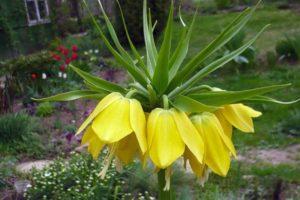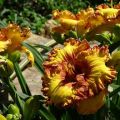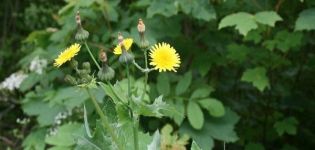Description and characteristics of the noble liverwort, the rules of planting and caring for the plant
Growing a noble liverwort helps to decorate the garden. This plant is a perennial herbaceous culture that reaches 8-15 centimeters in height. It blooms in early spring and is often used in landscape design. Group plantings look especially attractive. When the liverwort begins to bloom, the entire area is covered with a beautiful dense carpet.
Botanical features of the plant
According to the botanical description, the plant belongs to the Buttercup family. It is a perennial herbaceous crop. The height of the flower is no more than 15 centimeters. Long petioles are supplemented with leaves of 3 lobes. Young plants have a little fluff. However, over time, it disappears.
Brown scales are visible on the top of the root system. New arrow-shaped stems emerge from the leaf axils of last year.
The plant begins to bloom in early spring. Flowers emerge directly from the snow cover. Each bud forms 3-6 flowers. Their diameter is no more than 1.5 centimeters. The color scheme is different - blue or lilac. In more rare cases, pink and white flowers are found.
In the spring, the plant wakes up very quickly. In just 2 days, the bush grows 3 times. At the same time, the culture blooms for only 2 weeks. It should be borne in mind that all the elements of the plant are distinguished by toxic properties. Therefore, when in contact with a bush, it is recommended to wash your hands well.

Growth area
The plant lives in almost all European countries. It is found in Russia, Belarus, Ukraine. The liverwort also grows in Asia - Korea, Japan, China. In its natural environment, the culture prefers deciduous forests. More rarely, it is found in meadows.
Application in landscape design
This graceful plant does not flower for long, but this process begins when the snow melts.During this period, other flowers are absent. That is why the liverwort is often used in landscape design. Moreover, even faded bushes remain attractive throughout the season.

The culture is often combined with conifers. It is planted with juniper, thuja, boxwood. The liverwort looks very beautiful under the lilac and mock orange. The flower looks great against the background of stones. Therefore, it often serves as an adornment for an alpine slide.
When planting in a rock garden for the liverwort, it is worth choosing the shaded side. This will help avoid the negative effects of the scorching sun. Small hosts, primroses, dwarf barberry look good next to the plant. Sanguinaria or saxifrage will also work.
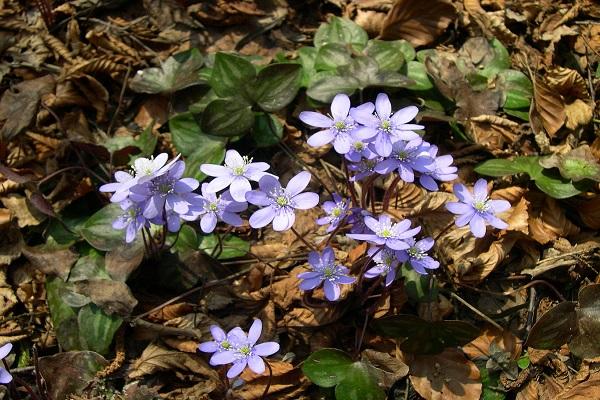
Popular varieties for planting in the garden
Today, many varieties of liverwort are known that are suitable for planting in a summer cottage. Each of them has certain features.
Spiky
This culture is found in forests. She loves a temperate climate. The leaves include 3 lobes. Blue-white flowers have a green center. They are characterized by large stamens. Thanks to this, the inflorescence looks more expressive.
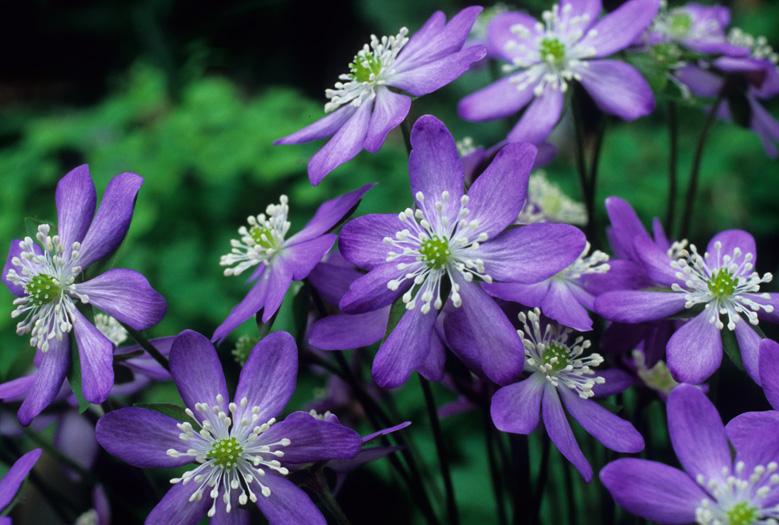
American
This plant was brought to Europe from America. It is characterized by five-lobed leaves of a light purple hue. The plant is distinguished by pink medium-sized flowers. They seem to be half-revealed.
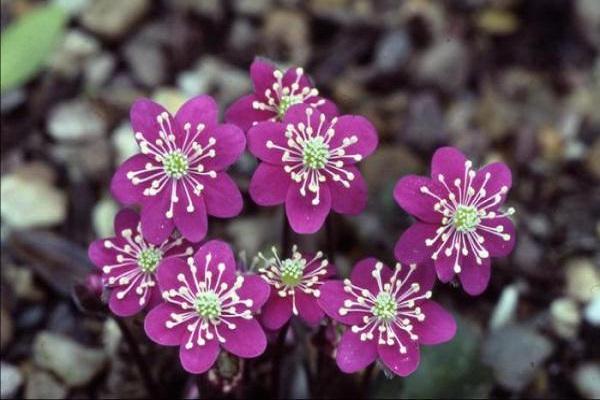
Noble
This is the most common type of culture. It is a low herbaceous bushes 10-20 centimeters high. Perennial grows in temperate climatic zones of the Northern Hemisphere. Also, flowers are found in the Moscow region and other nearby areas.

Transylvanian
This plant lives in the north of Romania and in the Carpathians. Garden forms look very attractive. They have large flowers. Moreover, their shade is different - pink, white, blue. Terry liverwort looks beautiful.
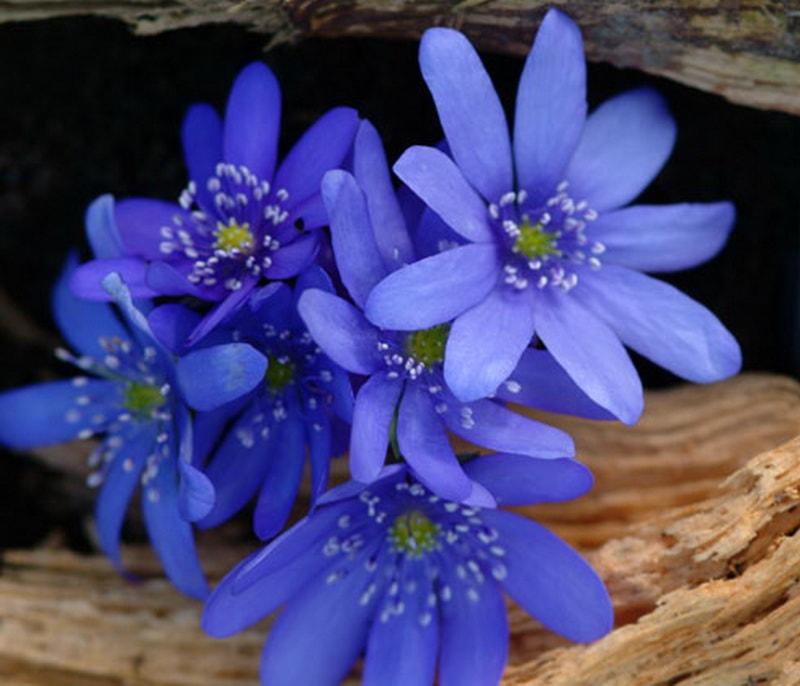
Asian
This plant lives in the Primorsky Territory. The culture loves shady areas and moist, drained soil. The plant is characterized by unhurried growth. This type of culture does not bloom every year.

Things to consider before boarding
To get a strong and strong plant, it is worth reading the key expert advice. For this, it is recommended to choose a suitable site.
Optimal location
The liverwort loves shaded areas. It is best to plant the plant under deciduous trees or shrubs. If the crop is placed in open areas, flowering will be short and poor.
Soil composition
The culture loves loose soil that is rich in nutrients. It is desirable that the soil is light and permeable. Before planting a crop, it is worth adding peat to the soil. Half-ripe needles are also suitable.

Area illumination
To ensure the normal development of the plant, it is recommended to choose a place without strong sunshine. A shady area is suitable - behind the house or near the fence.
It should be borne in mind that in such a place the plant will not live very long. Therefore, a place with medium illumination is considered an ideal option. This means that the sun should appear on it, but not for the whole day.
Favorable and unwanted neighbors
To create a beautiful flower bed, it is worth considering in detail its composition. Combining liverwort with other plants will help you get good results. Crocuses and daffodils are ideal for combination with the culture. Small primroses, adonis, sanguinaria will be no less successful option.
At the same time, flower growers strongly advise against combining the liverwort with plants that are characterized by rapid and aggressive development.

Planting a plant
In order for the noble liverwort to grow well, it is worth considering all the nuances during her planting.
Soil and site preparation
It is recommended to put some compost in the wells before planting the culture. It is also worth making a complex fertilizer.
Timing
It is worth planting the liverwort during rest - in July or August. Thanks to this, the plant will have time to take root before frost, which will ensure flowering already next spring. During planting, the regeneration buds should be at ground level.
Landing operations
It is recommended to plant the crop in open soil in groups. This will help you get the most effective result. Most often, the plant is planted with bushes of 5 pieces. Moreover, the culture can grow in one place for 20 years.
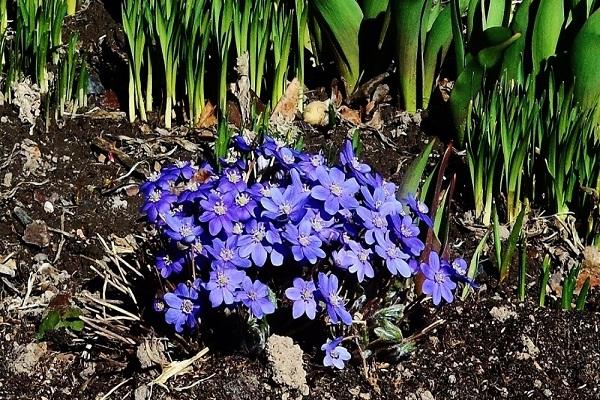
How to care for a flower
When planting a flower, he should provide full and high-quality care. This will help achieve a beautiful bloom.
Watering
This plant requires a sufficient amount of moisture. It can tolerate drought, but this will lead to leaf fall. It is recommended to water the crop as the soil dries out. It is important to ensure that the soil remains constantly moist.
Transfer
The plant easily tolerates transplanting at any time. This procedure can be carried out even in the middle of summer. To do this, it is recommended to dig a bush with a large clod of earth and move it to wet soil. In this case, the ideal time for transplanting a flower is spring or early autumn.
Fertilizer
This plant grows well without additional fertilization. If you want to enrich the soil, immediately after the snow melts, bone meal should be introduced into it. It is recommended to use nitrogen supplements after flowering is complete. In late summer, it is best to apply fertilizers that include phosphorus and potassium.
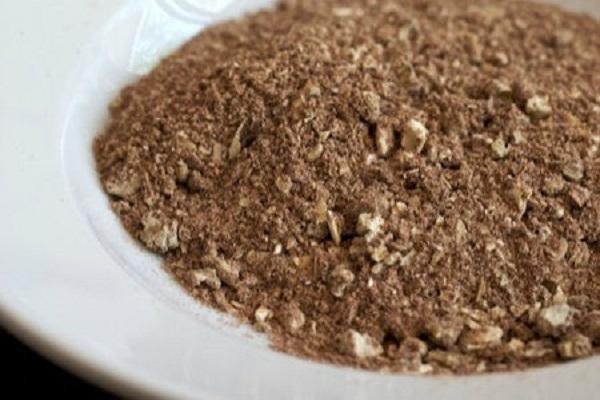
Pruning
This procedure is recommended to be carried out in early spring, when peduncles appear. Pruning should be done for decorative purposes. It consists in removing last year's leaves. In parallel with flowering, they change color and die off, which leads to a deterioration in the appearance of the bushes. If you cut the foliage in advance, you can get a beautiful plant.
After flowering, new leaves appear. Thanks to this, the culture retains its decorative properties. In this form, the liverwort serves as a flower bed decoration until winter.
Garter
This culture is compact in size and strong stem. Therefore, she needs the use of supports and a garter.
Diseases and pests: treatment and prevention
A perennial plant often encounters fungal diseases. For preventive purposes, it is recommended to use a solution of Bordeaux liquid. Its concentration should be 1%.
It is recommended to treat the culture with the product after the flowering process is completed.

Preparing for winter
Under natural conditions, the culture easily survives the winter. This is due to the snow cover in the forest. Fallen leaves play the role of an additional insulating layer. When growing a liverwort in a garden, flower growers are advised to mulch the beds. For this purpose, it is worth using compost or humus.
Breeding varieties
The plant is propagated in various ways. This is done by seed or dividing the bush. In more rare cases, a grafting procedure is used. A variety of methods helps each grower to choose the right option.
By dividing the bush
Terry plant forms do not form seeds. Therefore, such varieties are recommended to be propagated by division. To do this, use bushes over 4 years old. They are distinguished by a strong root system.
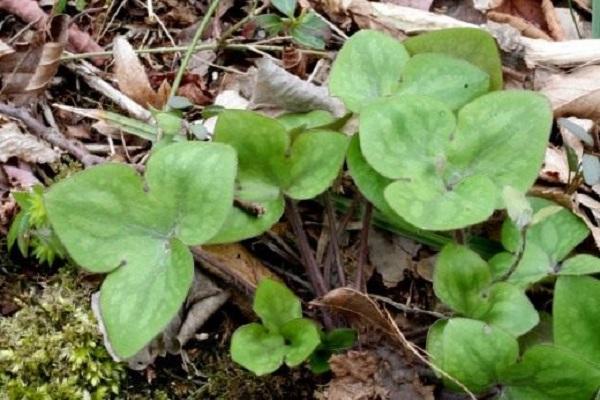
For the procedure, it is recommended to dig up the plant before flowering - in the fall.It is also permissible to do this in the summer, after the end of flowering. The bush should be shaken off the ground, divided and moved to fertile soil. Then the bed is mulched and watered systematically.
Seeds
After collecting the seeds, they should be placed in a cool place. It is recommended to store the planting material in a bag with wet vermiculite. Sphagnum is also perfect. If the seeds dry out, they will completely lose their germination.
It is recommended to plant the plant immediately after collecting the seeds. It is also permissible to do this before winter. The seed is buried approximately 1 centimeter in the soil.
When cold weather sets in, it is recommended to cover the area with spruce branches. Springs will appear in the spring. At the same time, young bushes grow rapidly. The flowering of seedlings begins only at 3 years.
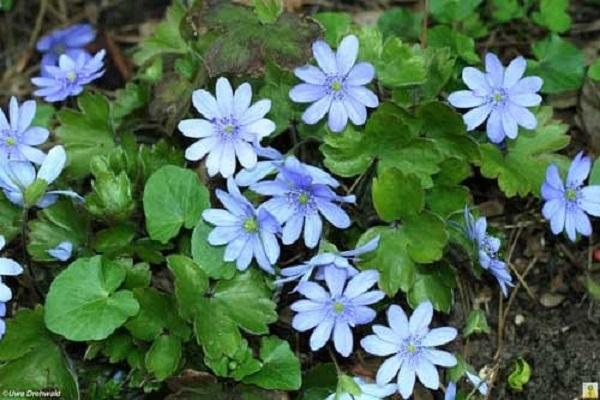
If the group is isolated from other forms, the mother coloration will be obtained. If other varieties are present nearby, the shades may mix..
By cuttings
Rosette rooting is often used to breed exotic varieties. To do this, make a small cut from below. After treatment with a stimulant, it should be transplanted into a suitable container. At the same time, there is a risk that the plant will not take root. However, the method usually gives the desired results.
It is worth planting a plant in the off-season. This is allowed in the spring or fall. It is important to ensure that the regeneration buds remain on the surface of the soil. It is recommended to fill the hole with compost and a small amount of fertilizer.
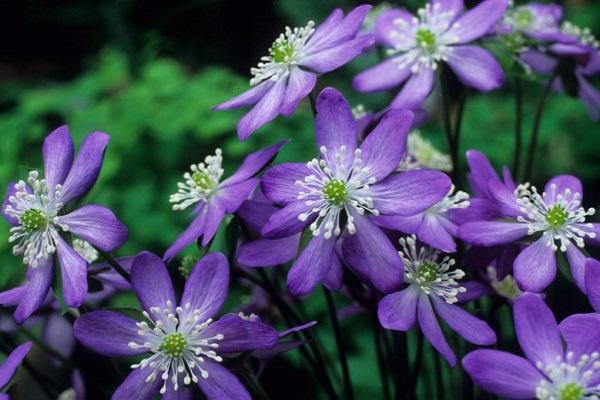
In one area, the culture grows for a long time. If you transplant it to a new place, it easily adapts at any stage of development. However, the procedure is very often not recommended.
The noble liverwort is a beautiful ornamental plant that is easy to care for. It is often used to decorate flower beds and gardens. Thanks to the correct composition, you will be able to get an excellent result.

